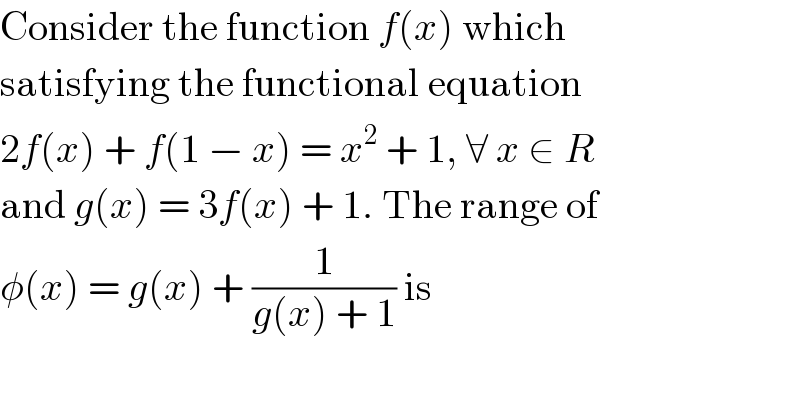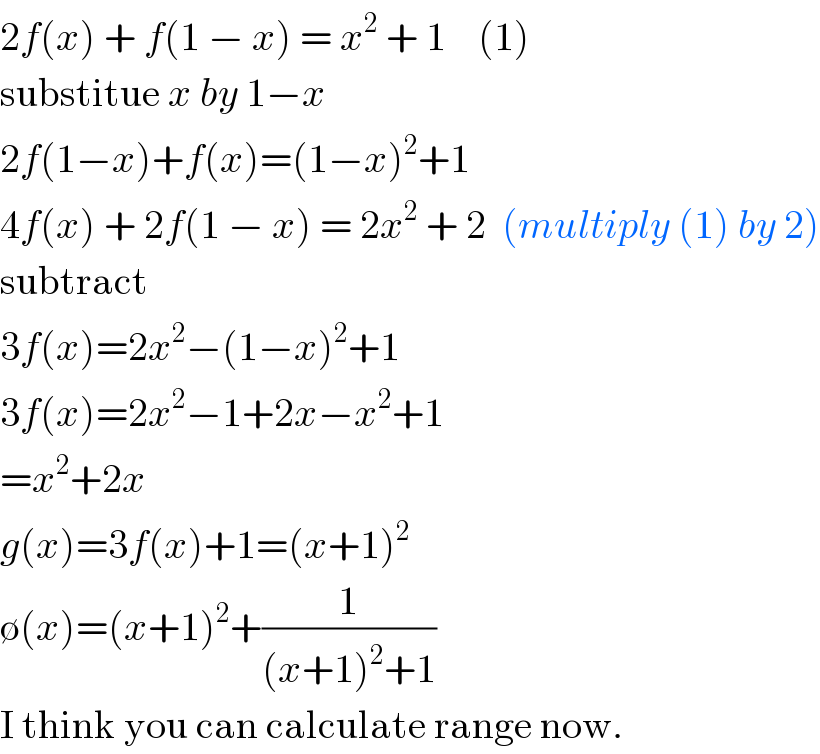
Question and Answers Forum
Question Number 25023 by Tinkutara last updated on 01/Dec/17

Answered by prakash jain last updated on 01/Dec/17

Commented by Tinkutara last updated on 02/Dec/17

Commented by prakash jain last updated on 02/Dec/17

| ||
Question and Answers Forum | ||
Question Number 25023 by Tinkutara last updated on 01/Dec/17 | ||
 | ||
Answered by prakash jain last updated on 01/Dec/17 | ||
 | ||
| ||
Commented by Tinkutara last updated on 02/Dec/17 | ||
 | ||
Commented by prakash jain last updated on 02/Dec/17 | ||
 | ||